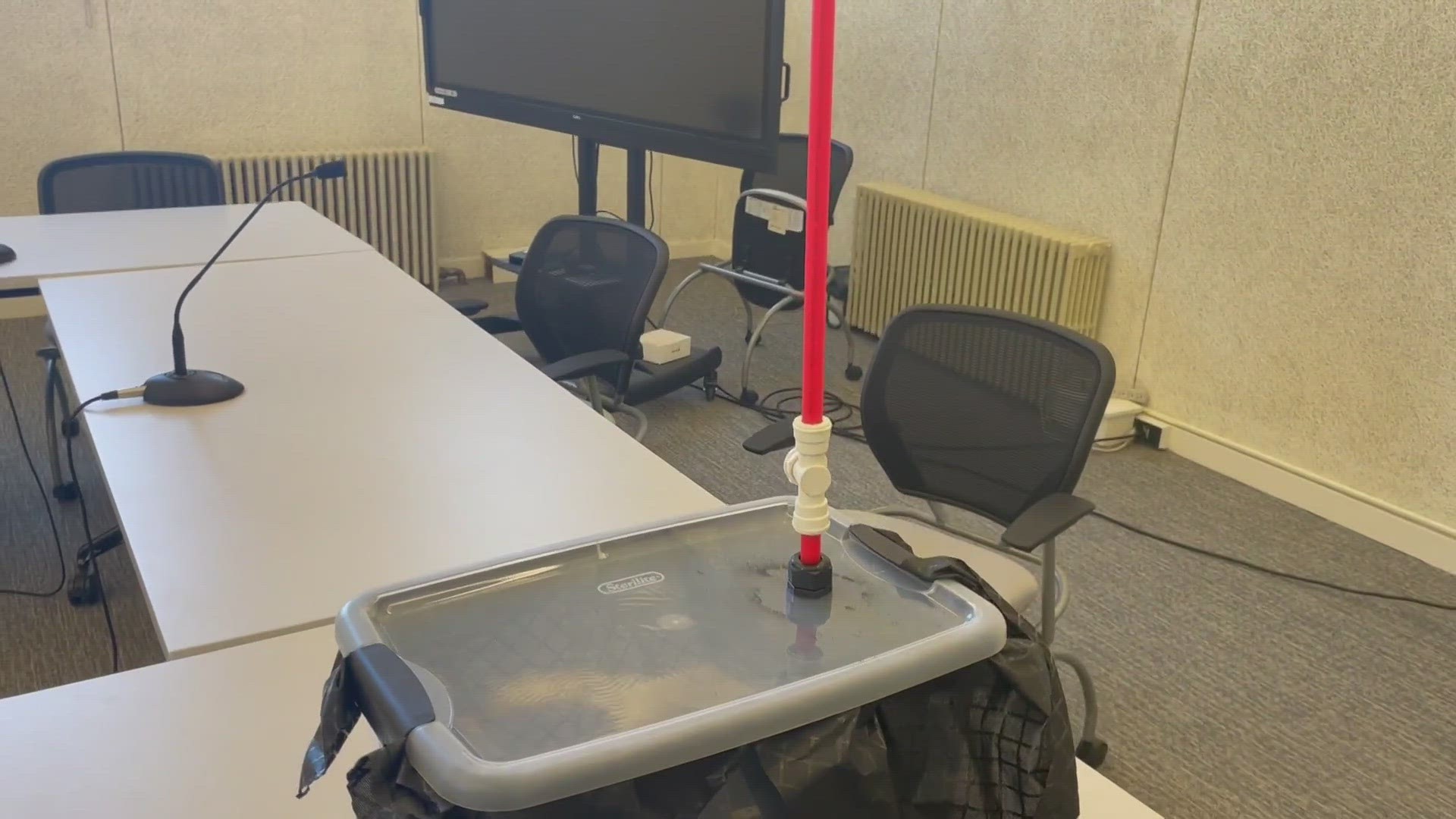CUMBERLAND, Maine — Greely High School students created a winning STEM project to ideally help improve clean drinking water.
A group of students from the school are representing their state in a national STEM competition, Solve for Tomorrow, after creating a winning project that addresses a real-world science and math issue.
The students, who come from all different grades and initially started off as strangers, united to create a solution to make the water coming out of their school's drinking fountains safer to drink, especially when it comes to PFAS chemical contamination.
"The idea for the project came about after the students heard stories about schools in Maine where the water had been turned off due to contamination, forcing them to bring in bottled water. With research, the students discovered that sludge from farms was impacting Maine more than previously thought, leading to water contamination," Andrew Fersch, Pathway Coordinator at Greely, said.
The student's teacher on this project, Andrew Fersch, knew each student and believed they all brought something different to the table, which ultimately contributed to the project's success.
Adele Weaver, a student involved with the project said, "For me, it's not necessarily the math and science part to it, but creating it"
To achieve their goal, the students spent time in the labs at the University of Maine, learning from experts.
They discovered that it only takes two to three minutes to remove PFAS from water, making it safer to drink.
"It's exciting to have young talent in the lab. The younger the students, the more creative they become. Their creativity is less limited," said Onur Apul, A UMaine assistant professor.
The project has been inspiring for the students, especially for girls pursuing STEM subjects.
"It's inspiring as a female in STEM. That was really empowering," Weaver said.
The students will find out next week if they will advance to New York City as one of the top 10 finalists.
"It's absolutely incredible. I don't know what to say. It's an amazing thing that we did, and I'm glad it's gotten this far already," Christopher Gilbert, a student involved with the project, said.
If the students become finalists, they could win up to $100,000 for their school.
"It is amazing because we can use that money to further our project or support other projects like this one," Weaver said.

